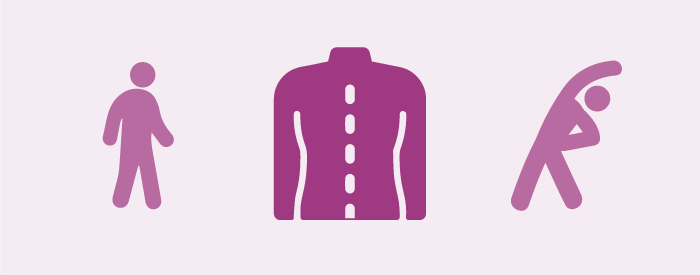CARE FOR YOUR BODY — CARE FOR YOUR BACK
To manage low-back pain, try these 5 tips
Back pain is one of the most common health problems and something most people will experience during their lives. If you’ve ever had low-back pain, you know how disruptive it can be to your daily life. In the past, doctors used to prescribe pain medication to help people manage their back pain, but that approach often masked the symptoms without getting at the cause. Today, doctors recommend starting with other remedies first for treating and managing low-back pain.
Here are a few treatments that have been found to be highly effective:
-
TALK TO YOUR DOCTOR
It is always a good idea to let your doctor know when you experience new or increased pain. While most low-back injuries can be treated at home, some require medical attention. If you don’t already have a primary care physician, you can start by calling the Trust’s Nurse Line.
-
KEEP MOVING
While you might not feel like it when you are in pain, continuing to move is probably the first thing your doctor will recommend. Sitting for too long allows the muscles that support your spine and back to weaken — and that can lead to further pain. Your doctor can help you determine how much movement is right for you.
-
TRY ICE AND HEAT
There is a lot of advice out there about whether to ice an injury or add heat, but the truth is, it depends on what feels best for you. You may want to ice your back when your pain is new, but find that after a while, heat helps relax the muscles. Experiment to find what brings you relief.
-
STRETCH AND STRENGTHEN
Strong, flexible muscles — especially the “core” ones that support your back and spine — can help relieve and prevent low-back pain. You may hear a lot about yoga, Pilates and tai chi — these work great, but if they are not for you, consider meeting with a physical therapist.* They can help you find a combination of exercises and stretches that you can incorporate into your day to keep your muscles active
-
KEEP GOOD POSTURE
When your spine is in alignment, this helps ease pressure on your lower back. Try focusing on using proper form and techniques — especially when lifting, bending, and twisting. Old habits are hard to break, so if you need assistance to maintain good posture, you can try tape or a brace for support. There are even downloadable Apps to alert and help remind you.
Try these tips and incorporate nonprescription pain relievers to help aches and stiffness when needed. The Trust has programs for both PPO and Kaiser Permanente participants to help manage back pain, so you don’t have to go it alone. Visit www.soundhealthwellness.com/soundsupport for more information.
*Please check your plan booklet for coverage requirements.
Source: WebMD.com

